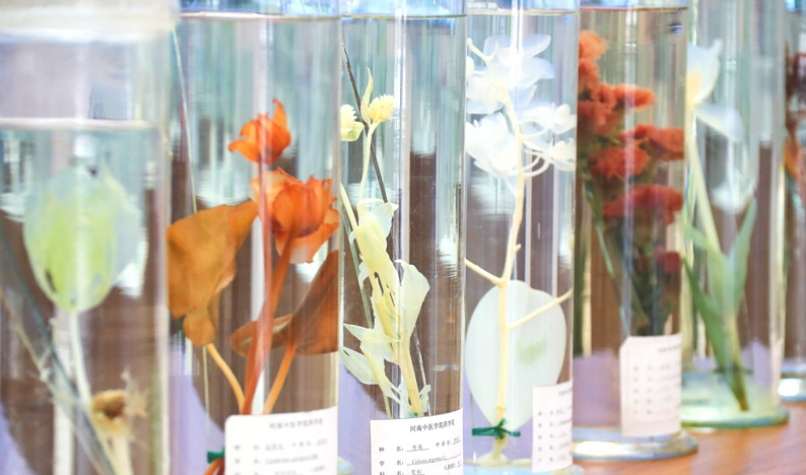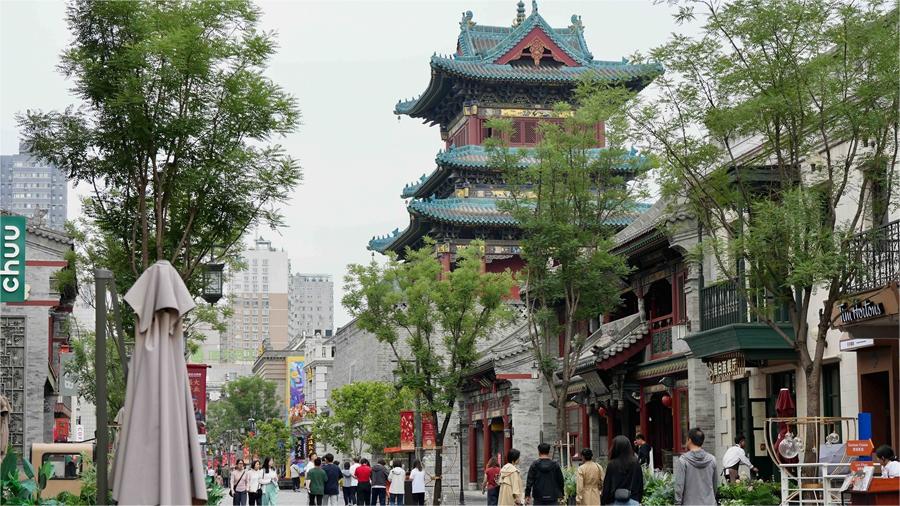Building a paradise for sea turtles in south China
HAIKOU, June 20 (Xinhua) -- For Huang Cheng, it would have been just an ordinary patrol, until he came across a sea turtle crawling on the beach and its nest. He was so excited by the discovery that he took a video and sent it to his father.
"Look dad! The first mother sea turtle of this year has come ashore on Beidao Island and laid eggs," he said.
Huang, 42, is the director of the residents' committee of Beidao residential community of Sansha City, south China's Hainan Province. His father Huang Hongbo has been protecting sea turtles for more than five decades. At the age of 15, the junior Huang started to follow in his father's footsteps and has been helping with sea turtle protection on the island.
"Perhaps my father saw her off through the waves when she was just a baby turtle, and now that she has returned as a mother. It's my turn to welcome her home," he said.
In fact, a sea turtle's life journey is fraught with danger.
According to Huang, out of every 1,000 sea turtle hatchlings that swim into the ocean, only one will make it to adulthood. Despite traveling thousands of miles, it still returns to its birthplace or last nesting ground to breed, relying on Earth's magnetic field.
Latest statistics showed that over the past seven years, a total of 637 sea turtle nests with eggs have been found on Beidao Island, part of the Xisha Islands, accounting for 37 percent of the total in Xisha.
Xisha Islands are an important habitat of green sea turtles. In China, 90 percent of sea turtle population resides in the South China Sea, of which green sea turtles account for more than 80 percent of the total. Beidao is considered to be the largest green sea turtle nesting ground in China.
Since the 1980s, due to long-term overfishing, indiscriminate killing, illegal trade, overexploitation, marine pollution and other human factors, as well as the threat of climate change, the global sea turtle population and habitats have decreased. All sea turtles have been listed in the Convention on International Trade in Endangered Species of Wild Fauna and Flora (CITES) Appendix I. In February 2021, China's revised national list of key protected wild animals included five species of sea turtles in China as national Class-A key protected wild animals.
For decades, many local people, like the Huang family, have endeavored to protect sea turtles.
In addition to the daily maintenance of island facilities and dealing with community work, they need to assist in patrolling islands and reefs, planting trees, cleaning sea garbage, feeding rescued turtles and various other duties.
Zhang Ting is a sea turtle researcher from Hainan Normal University, who considered the fishermen on the island to be a "local expert" of sea turtles.
"I follow them every day to learn about the living habits of sea turtles and to see the sea turtles lay eggs," she said. The various experiences of those "experts" have enriched her knowledge about sea turtles.
One of the "local experts" is the old Huang. Zhang still remembers how he would carefully prepare food each day to feed baby sea turtles in poor health.
"Every day, he carried seawater to clean the rescued turtles, changed the water in the pool, and gave them medicine," she recalled.
Zhang brought special medicines to the island for the treatment of turtles. She also taught local fishermen how to use scientific approaches to rescue injured sea turtles, taught them the importance of protecting the sea and the turtles, and told them how to avoid injuring turtles during fishing operations.
In 2021, the Beidao sea turtle protection center was established. Scientific research teams from Xiamen University, Sun Yat-sen University, Hainan Normal University, and the South China Sea Fisheries Research Institute of the Chinese Academy of Fishery Sciences have set up laboratories or research bases on the Beidao Island, where experts conducted research on the status of green sea turtle population, sea turtle ecology and conservation biology.
"With the support and help of local government, we did research on 11 islands and reefs in the Xisha Islands," Zhang said. "We comprehensively surveyed the survival situation of sea turtles and obtained a lot of precious data and samples."
Over the past few years, Sansha City has gradually established a scientific system for sea turtle protection, and has formulated and issued several protection plans and regulations. Authorities have implemented 24-hour monitoring and protection mechanism for sea turtles that come ashore to lay eggs.
According to official figures, after years of protection and ecological restoration, a total of 1,734 nests with green sea turtles eggs were found in Xisha Islands from 2017 to 2023.
Photos
Related Stories
- China's central region endeavours to protect eco-environment
- Endangered black-faced spoonbills found breeding in Yellow River Delta
- China's anti-desertification philosophy, efforts turn sand into gold
- Explainer: How China leads global fight against desertification
- From surviving to thriving amidst sands, Chinese city fortifies "green Great Wall"
- China's megacity Shenzhen enjoys fruits of ecological conservation
- Chinese vice premier urges efforts on Three-North Shelterbelt Forest Program
- Nature reserve in SW China's Yunnan sees increasing species richness
- China's space-air-ground monitoring system boosts biodiversity conservation
- Technology gives ecological protection an edge in Hainan Tropical Rainforest National Park
Copyright © 2024 People's Daily Online. All Rights Reserved.









